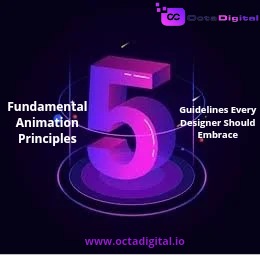Introduction:
Animation is a captivating art form that breathes life into still images, captivating audiences with its movement and emotion. Behind every mesmerizing animation lies a set of fundamental principles that serve as the backbone of the craft. In this comprehensive guide, we’ll delve into these essential guidelines that every designer should embrace to elevate their work and captivate their audience.
1. Squash and Stretch (SEO Words: Squash and Stretch, Animation Principle, Flexibility):
Squash and stretch is a fundamental animation principle that adds life and dynamism to characters and objects. By exaggerating the shape and form of elements, designers can create a sense of weight, impact, and flexibility in their animations.
2. Timing and Spacing (SEO Words: Timing, Spacing, Animation Timing):
Timing and spacing are crucial aspects of animation that determine the pace and rhythm of movement. By carefully adjusting the timing of keyframes and the spacing between them, designers can create animations that feel natural, fluid, and engaging.
3. Anticipation and Follow-through (SEO Words: Anticipation, Follow-through, Animation Techniques):
Anticipation and follow-through are techniques used to convey the motion of objects and characters in animation. By incorporating these principles, designers can add realism and depth to their animations, enhancing the overall impact and believability of the scene.
4. Arcs and Paths (SEO Words: Arcs, Paths, Animation Movement):
Arcs and paths are fundamental concepts in animation that describe the trajectory of movement. By following natural arcs and paths, designers can create animations that feel smooth, organic, and visually appealing to the audience.
5. Secondary Action and Overlapping Motion (SEO Words: Secondary Action, Overlapping Motion, Animation Detail):
Secondary action and overlapping motion are techniques used to add complexity and depth to animations. By incorporating subtle movements and interactions, designers can create animations that feel rich, immersive, and full of personality.
Conclusion:
In conclusion, the fundamental animation principles discussed in this guide serve as invaluable guidelines for designers looking to create captivating and impactful animations. By embracing these principles – squash and stretch, timing and spacing, anticipation and follow-through, arcs and paths, secondary action and overlapping motion – designers can elevate their work to new heights and captivate their audience with compelling animations.
SEO Keywords: Squash and Stretch, Animation Principle, Flexibility, Timing, Spacing, Animation Timing, Anticipation, Follow-through, Animation Techniques, Arcs, Paths, Animation Movement, Secondary Action, Overlapping Motion, Animation Detail.





